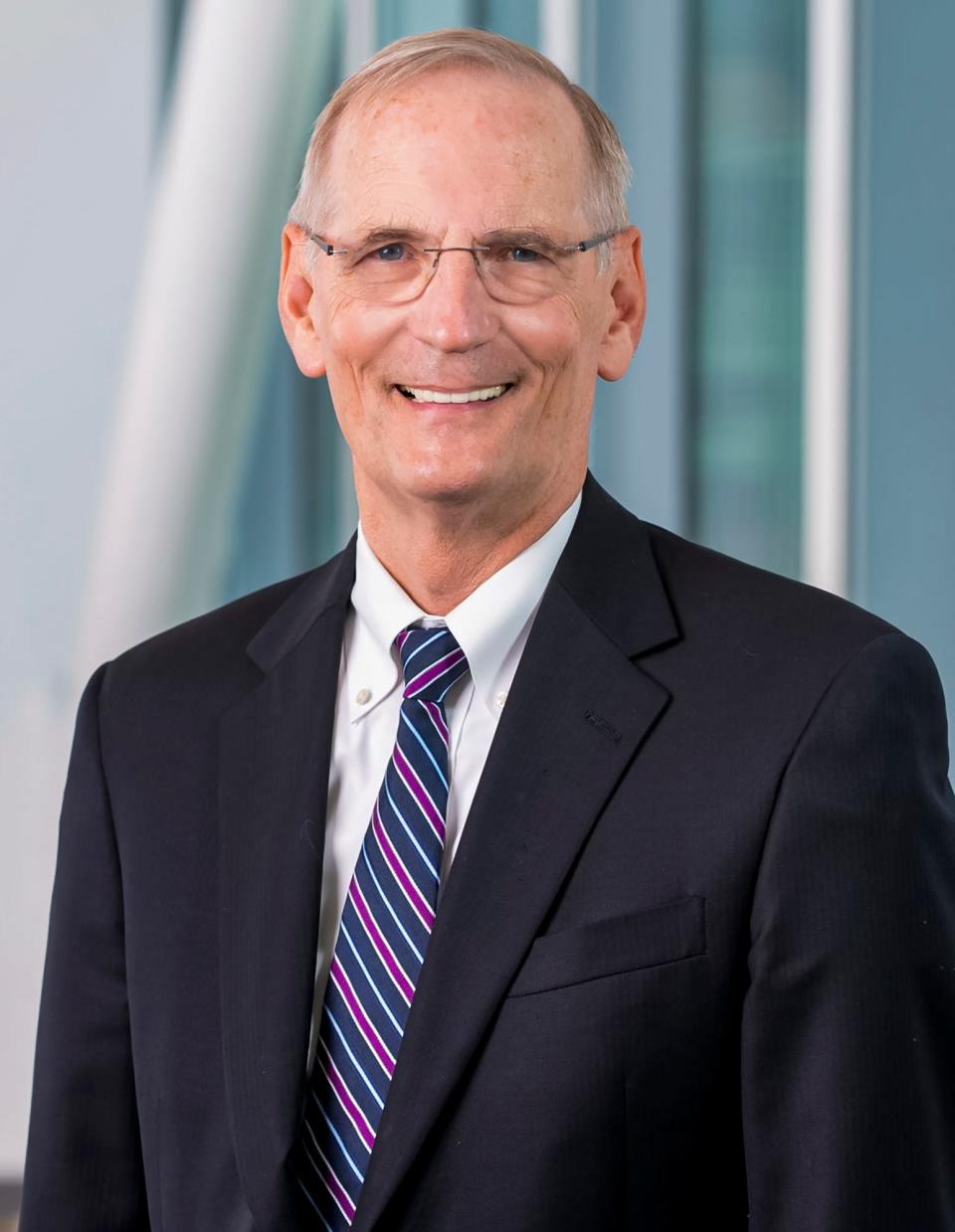OU Health's CEO stays positive as system's debt worries climb

While Dr. Richard Lofgren acknowledges that OU Health is continuing to struggle with increased costs and labor shortages, a spokesperson for the organization tells The Oklahoman it expects a recently completed management reorganization will enable it to avoid defaulting on $1.3 billion in debt.
"We don't anticipate a problem meeting our bond obligations with our current management plan," David McCollum, OU Health's media relations manager, responded Friday after he was asked if the system expected any difficulties in meeting its ongoing operational and debt-related expenses.
Still, questions are being asked about OU Health's ability to remain solvent after Moody's downgraded its rating on the organization's $1.3 billion in debt in December.
Lofgren, OU Health's president and CEO since February 2022, addressed the system's issues during a speech he made to Oklahoma City Rotarians in January.
OU Health, he told them, is in a tough spot financially largely because of issues caused by COVID-19 that impacted the health care system.
Among these, he said, are a continuation in illnesses, inflation-related cost increases for supplies and especially labor (caused by the great resignation and pre- and post-COVID-19 fatigue-caused burnouts).
A problem for providers like OU Health, Lofgren said, is that it is difficult to adjust what patients are charged to recover those increased costs.
"Though all of us have tried to move on, the pandemic is still very much alive and impacts us in multiple ways," he said, adding, "the biggest issue we have facing us is really around inflation."
Why Moody's downgraded OU Health's rating
Moody's downgraded OU Health's bond indebtedness to Ba3 in December. In its report, Moody's said its analysts expect:
OU Health's cash flow will continue to be well below historical levels and expectations, contributing to a further decline in an already weak liquidity position and the increased the risk of a covenant breach.
Labor costs will continue to be more expensive than pre-pandemic levels.
A prolonged period of management turnover at OU Health, with several interim leaders and the short tenure of recent senior appointments factoring into Moody's environmental and social governance considerations.
High competition from other health care systems and physician-owned facilities.
However, Moody's noted OU Health could receive help this year from Oklahoma's Legislature or other related entities and said that its revenues could improve if Oklahoma's law to implement Medicaid managed care takes effect later this year. The law currently is being reviewed by the Centers for Medicare & Medicaid Services.
As for any potential help from the Legislature, no specifics have been proposed. Attempts to reach Appropriations and Budget Chairman Sen. Roger Thompson, R-Okemah, or state Rep. Marcus McEntire, R-Duncan, who chairs the House's appropriations and budget subcommittee on health, were not successful so far.
OU Health debt comes with hospital consolidations
While OU Health is a relatively new arrival on Oklahoma's health care scene, the pieces that make up its operations are much older.
The state operated most of its own hospitals for many years. However, in the late 1990s, the Legislature created a University Hospitals Trust, which worked out an arrangement for HCA, a private hospital chain, to purchase Oklahoma's hospitals and operate them.
That arrangement lasted until 2018, when Oklahoma decided to take back three facilities: the health center south of the Capitol, the health center in Edmond and Oklahoma Children's Hospital. To accomplish this objective, the state created a nonprofit called OU Medicine Inc. to operate the facilities.
OU Medicine then obtained $1.16 billion through a bond issue, using the Oklahoma Development Finance Authority as a conduit, and spent $750 million to purchase back the three facilities, $400 million to build a new hospital tower and $30 million to acquire proton beam equipment used to treat cancers. Subsequently, it obtained about another $150 million in loans through the authority.
In 2021, OU Medicine merged with OU Physicians, the entity employing the university's health sciences center faculty, to create OU Health.
The three hospitals, together with an ambulatory surgery center, other clinics and related access points within its system, provide educational and training facilities for medical students enrolled at OU.
Lofgren, OU Health's first president and CEO, told Rotarians he pretty much knew what he was walking into when he agreed to become the first leader of a new organization created when the University of Oklahoma's hospitals, clinics and the university’s faculty practice combined into one entity.

"One of the things I realized a long time ago is that the greatest challenge facing the health of the country isn’t that we don’t have great technology and great delivery systems. But we have a health care system that’s clumsy, difficult to navigate, increasingly not affordable, and still fails many of our citizens. So that’s always been a driver for me," he said in March 2022.
At the same time, though, he also described the University of Oklahoma's decision to create OU Health as "bold" and "vitally important to create a flagship academic health system serving all of Oklahoma."
Lofgren told Rotarians OU Health is:
Training nearly 600 residents in a variety of specialties, some so unique that their training only can be obtained at OU.
Employing more than 1,000 credentialed physicians and advanced practitioners involving 74 specialties and subspecialties — nearly every kind of physician or oncologist a person might need.
Conducting 574 clinical trials, many started at OU, as it serves patients in 800 licensed beds.
Operating a Level-1 trauma center, the state's largest prenatal intensive care unit, a Level-4 neonatal intensive care unit, and comprehensive care centers involving pediatrics, cancer, neurosurgery, high-risk obstetrics and more.
Lofgren: OU Health fulfills three-part mission
OU Health interacts with the University of Oklahoma's Health Sciences Center to create an academic health system that supports research, education and clinical care, or, in other words, makes up a system where people learn, teach and heal, Lofgren told the gathering.
Benefits of an academic health system, Logren said, are that it offers patients access to unique and lifesaving health care services that include teams of up-to-date experts with nationwide connections who can use cutting edge technologies and therapies through clinical trials to both improve patient outcomes and foster economic growth.
"Our purpose is fairly simple: Improving lives through healing and discovery, to become the destination of choice for people with complex, life-threatening illness and to become a top-tier, nationally recognized academic center for medicine," Lofgren said.
Beyond that, he said OU Health also needs to assist regional and rural hospitals in improving their care, asserting that all care that can be done locally should be done locally.
"My goal is to get us to where no one needs to leave the state of Oklahoma to get the care they need and deserve," Lofgren said.
"I will leave you with the fact that I am incredibly optimistic about health care and about OU Health in particular," Lofgren told Rotarians, adding, "and that's because of our mission — what we do, matters."
This article originally appeared on Oklahoman: CEO: OU Health's mission more vital than ever despite debt concerns

